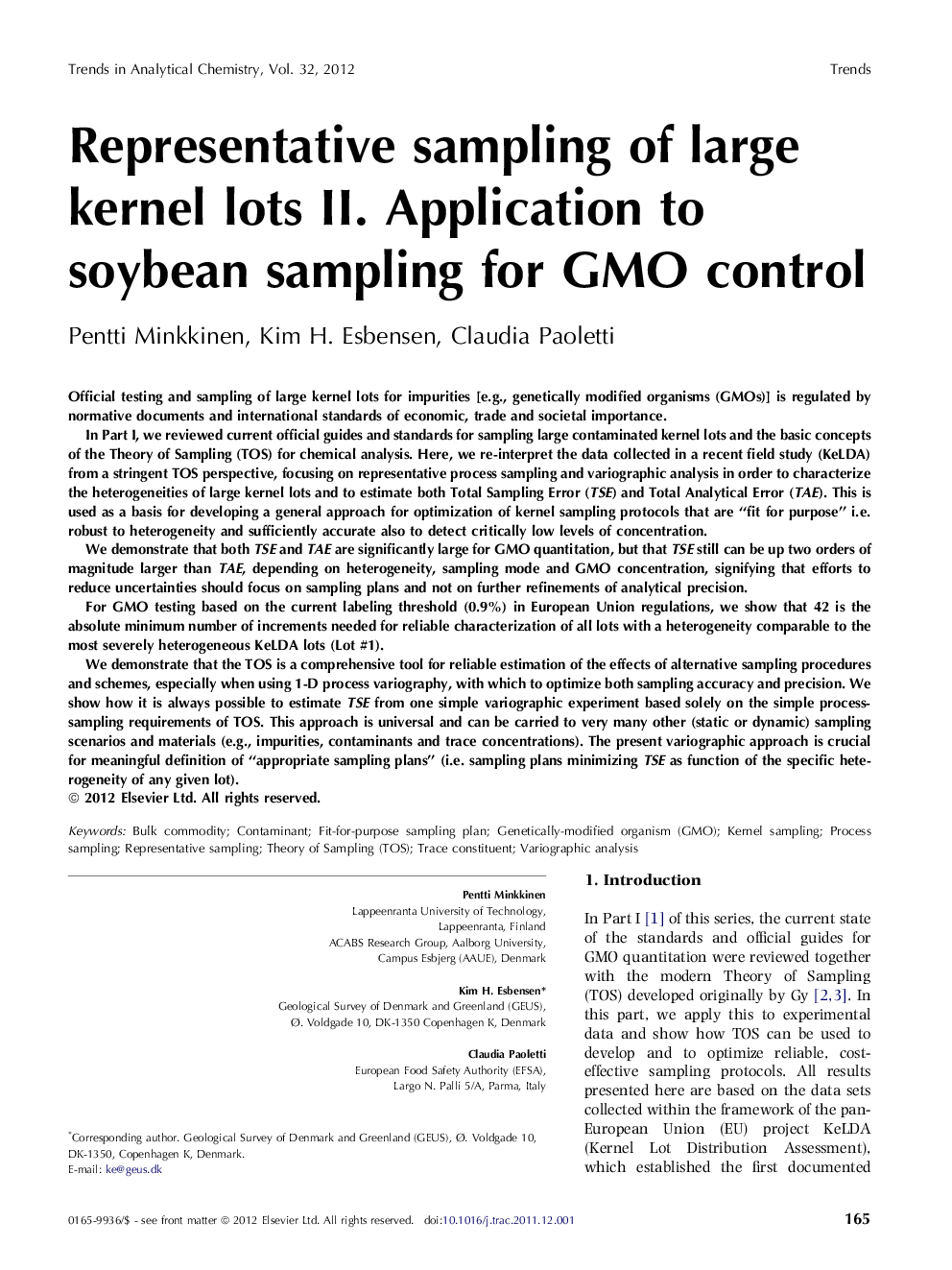| Article ID | Journal | Published Year | Pages | File Type |
|---|---|---|---|---|
| 1248270 | TrAC Trends in Analytical Chemistry | 2012 | 13 Pages |
Official testing and sampling of large kernel lots for impurities [e.g., genetically modified organisms (GMOs)] is regulated by normative documents and international standards of economic, trade and societal importance.In Part I, we reviewed current official guides and standards for sampling large contaminated kernel lots and the basic concepts of the Theory of Sampling (TOS) for chemical analysis. Here, we re-interpret the data collected in a recent field study (KeLDA) from a stringent TOS perspective, focusing on representative process sampling and variographic analysis in order to characterize the heterogeneities of large kernel lots and to estimate both Total Sampling Error (TSE) and Total Analytical Error (TAE). This is used as a basis for developing a general approach for optimization of kernel sampling protocols that are “fit for purpose” i.e. robust to heterogeneity and sufficiently accurate also to detect critically low levels of concentration.We demonstrate that both TSE and TAE are significantly large for GMO quantitation, but that TSE still can be up two orders of magnitude larger than TAE, depending on heterogeneity, sampling mode and GMO concentration, signifying that efforts to reduce uncertainties should focus on sampling plans and not on further refinements of analytical precision.For GMO testing based on the current labeling threshold (0.9%) in European Union regulations, we show that 42 is the absolute minimum number of increments needed for reliable characterization of all lots with a heterogeneity comparable to the most severely heterogeneous KeLDA lots (Lot #1).We demonstrate that the TOS is a comprehensive tool for reliable estimation of the effects of alternative sampling procedures and schemes, especially when using 1-D process variography, with which to optimize both sampling accuracy and precision. We show how it is always possible to estimate TSE from one simple variographic experiment based solely on the simple process-sampling requirements of TOS. This approach is universal and can be carried to very many other (static or dynamic) sampling scenarios and materials (e.g., impurities, contaminants and trace concentrations). The present variographic approach is crucial for meaningful definition of “appropriate sampling plans” (i.e. sampling plans minimizing TSE as function of the specific heterogeneity of any given lot).
► KeLDA data are here re-interpreted w.r.t. the Theory of Sampling (TOS). ► KeLDA data subjected to proper variographic analysis and interpretation. ► Total sampling errors can always be estimated from simple variographic experiments. ► “Appropriate sampling plans” must correspond to specific lot/material heterogeneity. ► General “fit-for-purpose” kernel sampling protocol optimization.
